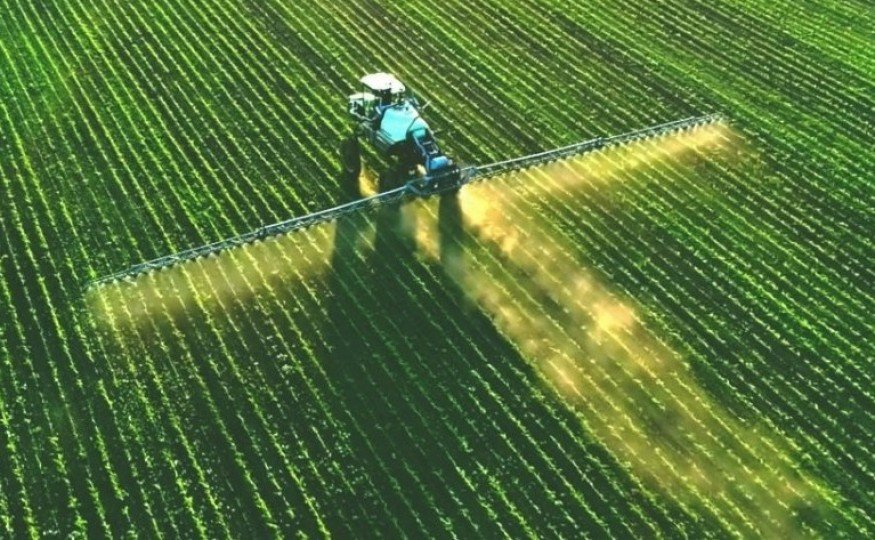


Source: BrasilAgro
AGRICULTURAL DEFENSIVES - internet image
Photo MS Post
The high prices of fertilizers and the consequent deterioration of the exchange ratio between commodity and fertilizer discouraged the anticipation of purchases of inputs by producers for application next year. For use in the 2021/22 winter crop, the pace of purchases is 1 percentage point ahead of the same period last year, while for application in the 2022/23 summer grain crop, there is a delay of 5 percentage points in setting prices of fertilizers, reveals a survey by consultancy StoneX, ahead of Broadcast Agro.
The retraction is seen after a long period, starting in 2019, in which the producer was ensuring more and more in advance his fertilizer package, especially for grains. "Unlike 2019 and 2020, where we had a strong anticipation of purchase from the fourth quarter, this year, due to the high levels of fertilizer prices and exchange relationships with several unfavorable crops, we observed a retraction of the producer in anticipating purchases. for the next crops", evaluates the consultant of risk management of fertilizers at StoneX, Rafael Yamamoto.
By the third week of November, 49% of the fertilizers to be used in Brazilian crops in the first half of next year - sowing period for winter crops such as safrinha corn and wheat and cotton - had already been sold. The anticipated commercialization of fertilizers for use in the first half of next year was accelerated until the end of May and then progressed at a slower pace, according to the survey. In May, 28% of inputs for the period had already been guaranteed by producers and in August, the index reached 39%.
Despite the general rhythm of purchases for use in the winter crop being 1 percentage point ahead of the same period last year, there is a decrease
of 12 percentage points in the commercialization of fertilizers in the Midwest, a region that leads the production of safrinha corn and cotton, highlights Stonex.The fertilizer trading index reached 59% of the volume needed in the region in November this year, compared to 71% in the same period last year. Behind the Midwest, the North/Northeast region and the South region appear, with 50% and 45% of the volume sold, respectively. The Southeast, on the other hand, was below the national average, with 39% of purchases assured.
The deceleration of purchases is more accentuated in the commercialization for application in the second half of 2022 - planting period of the 2022/23 summer crop - and in the large regions that produce summer grains. Until the third week of November, 19% of the fertilizers to be purchased in the first half of the 2022/23 season had already been purchased by producers, compared to 24% in the same period last year.
In August of this year, there was still no indication of purchase for the second half of next year. Approximately two thirds of the fertilizers consumed annually in Brazil are used in the second half of the year. Of this volume, most is applied from September onwards, when the planting of soybeans and summer corn begins.
In the Midwest, the main producing region of summer grains, the decline in commercialization anticipated for the second half of 2022 is even greater than the national index, of 14 percentage points. In the reported period, 22% of the fertilizers had already been contracted, compared to 36% reported in November last year. The Southeast region guaranteed 20% of the fertilizers for the second half of next year, while in the North/Northeast, the rate is 18% and, in the South, 16%. The survey was carried out by the consultancy until the third week of this month with mixers, distributors, cooperatives, medium and large producers from all regions of the country and considers the sales of fertilizers through price fixing and closing of contracts for future delivery.
The survey covered an area of 25 million hectares, equivalent to 41% of the area sown with grain in the 2020/21 harvest. The advance of fertilizer purchases, observed since 2019, intensified as the exchange ratio - the amount of a certain commodity needed to buy 1 ton of fertilizer - became more favorable to the producer. This relationship, however, is less favorable to the producer, due to the continuous rise in fertilizer prices. In other words, the Brazilian farmer's purchasing power of fertilizers is lower, despite sustained commodity prices.
According to data from StoneX, the amount paid to import the main macronutrients into Brazil has risen by more than 98% since the beginning of the year. The price of CRF Brasil urea increased 201% from January to November this year to US$ 874 per ton. The price of potassium chloride increased 228% in the same comparison to US$ 803 per ton, while the price of monoammonium phosphate (MAP) rose 98% to US$ 833 per ton.
For this year, Stonex estimates growth of 8% in fertilizer deliveries to the final consumer in Brazil to 43.81 million tons compared to 40.56 million tons consumed domestically last year.
The higher demand is due to the larger planted area of grains and an optimistic scenario for the profitability of Brazilian crops (Broadcast, 11/25/21)